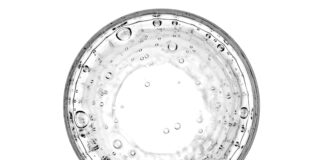Hydrogel’s remarkable versatility and advantageous properties have led to its widespread adoption across diverse industries. In biomedicine, hydrogels play a pivotal role in drug delivery systems, tissue engineering, wound healing, and medical implants. By mimicking the extracellular matrix, hydrogels provide a conducive environment for cell growth and regeneration, making them invaluable in regenerative medicine. Additionally, their ability to release therapeutic agents in a controlled manner enhances their efficacy in targeted drug delivery, minimizing side effects and improving patient outcomes.
1. Introduction to Hydrogel:
Hydrogel is a versatile material that has gained significant attention across various industries due to its unique properties and wide range of applications. It is a network of polymer chains that are hydrophilic, meaning they have a strong affinity for water. Hydrogels can absorb and retain large amounts of water while maintaining their structural integrity, making them useful in a multitude of fields, including biomedicine, agriculture, cosmetics, and environmental engineering.
2. Composition and Structure:
Hydrogels are composed of three-dimensional networks of polymer chains, typically made from synthetic or natural polymers. These polymers can include polyacrylamide, polyvinyl alcohol, polyethylene glycol, or natural polymers like alginate or gelatin. The structure of hydrogels allows them to swell in the presence of water, forming a gel-like material with high water content.
3. Properties of Hydrogel:
Hydrogels exhibit several unique properties that make them suitable for a wide range of applications. These properties include high water content, biocompatibility, soft and rubbery consistency, tunable mechanical strength, and permeability to small molecules. Additionally, hydrogels can be engineered to have specific properties, such as pH responsiveness, temperature sensitivity, or the ability to release drugs or nutrients over time.
4. Applications in Biomedicine:
One of the most prominent applications of hydrogels is in biomedicine, where they are used for drug delivery, tissue engineering, wound healing, and medical implants. Hydrogels can be designed to mimic the extracellular matrix found in living tissues, providing a supportive environment for cell growth and tissue regeneration. They can also be loaded with drugs or growth factors and implanted into the body to release therapeutic agents over time.
5. Agricultural Applications:
In agriculture, hydrogels are used to improve soil moisture retention and promote plant growth. Hydrogel beads or granules can be incorporated into soil or growing mediums to absorb and retain water, reducing the need for frequent irrigation and improving plant survival rates, especially in arid or drought-prone regions. Hydrogels can also be used to deliver fertilizers or pesticides directly to plant roots, increasing nutrient uptake and reducing environmental contamination.
6. Cosmetic and Personal Care Products:
Hydrogels are commonly used in cosmetic and personal care products due to their moisturizing and skin-soothing properties. They are found in products such as moisturizers, facial masks, eye patches, and wound dressings, where they provide hydration and improve skin elasticity. Hydrogel-based formulations are preferred for their lightweight, non-greasy texture and ability to deliver active ingredients effectively to the skin.
7. Environmental Engineering:
In environmental engineering, hydrogels are used for wastewater treatment, pollutant removal, and soil remediation. Hydrogels can absorb and immobilize contaminants from water or soil, making them easier to remove or degrade. They can also be used to encapsulate pollutants, preventing their release into the environment. Additionally, hydrogels are used in water retention systems to prevent soil erosion and improve water conservation in landscaping and agriculture.
8. Future Developments and Challenges:
As research into hydrogels continues to advance, new applications and technologies are emerging. Scientists are exploring the use of smart hydrogels that respond to external stimuli, such as light, temperature, or pH, for controlled drug delivery and tissue engineering. However, challenges remain in the development of hydrogels with optimal properties for specific applications, as well as in scalability and cost-effectiveness for large-scale production.
9. Biocompatibility and Safety Considerations:
One of the key considerations in the use of hydrogels in biomedical applications is biocompatibility and safety. While many hydrogels are biocompatible and well-tolerated by the body, there is still a need to ensure that they do not induce inflammation, immune responses, or other adverse reactions. Additionally, the degradation products of hydrogels must be carefully evaluated to ensure they do not pose risks to human health or the environment.
10. Commercial Availability and Adoption:
Hydrogels are commercially available from various suppliers and manufacturers, catering to the diverse needs of different industries. The adoption of hydrogels in various applications continues to grow, driven by their unique properties, versatility, and potential for innovation. As research and development in the field of hydrogels progress, their use is expected to expand further, leading to new and exciting applications in diverse fields.
Beyond biomedicine, hydrogels have found applications in agriculture to enhance soil moisture retention, promote plant growth, and reduce water usage. By incorporating hydrogel beads into soil, farmers can mitigate the effects of drought and optimize water management practices, ultimately improving crop yield and sustainability. Moreover, hydrogel-based formulations can deliver nutrients and pesticides directly to plant roots, enhancing nutrient uptake and reducing environmental contamination, thereby contributing to more eco-friendly agricultural practices.
In the realm of cosmetics and personal care products, hydrogels are prized for their moisturizing and skin-soothing properties. They are a common ingredient in moisturizers, facial masks, eye patches, and wound dressings, where they provide hydration, improve skin elasticity, and facilitate the delivery of active ingredients. With their lightweight texture and ability to adhere comfortably to the skin, hydrogel-based formulations offer a luxurious and effective skincare experience, catering to consumers’ growing demand for innovative and efficacious products.
In environmental engineering, hydrogels play a crucial role in wastewater treatment, pollutant removal, and soil remediation efforts. Their ability to absorb and immobilize contaminants from water and soil simplifies the cleanup process, making it more efficient and cost-effective. Hydrogels can encapsulate pollutants, preventing their dispersion into the environment and facilitating their safe disposal or degradation. Additionally, hydrogel-based water retention systems help prevent soil erosion and promote water conservation in landscaping and agricultural applications, contributing to sustainable environmental practices.
Looking ahead, ongoing research and development in the field of hydrogels hold promise for continued innovation and application expansion. Scientists are exploring advanced hydrogel formulations, including smart hydrogels that respond to external stimuli for precise control over drug release and tissue regeneration. However, challenges persist in optimizing hydrogel properties for specific applications, as well as in scaling up production to meet commercial demand cost-effectively. Addressing these challenges will be critical to unlocking the full potential of hydrogels and realizing their transformative impact across industries.
While the use of hydrogels offers numerous benefits, it is essential to consider biocompatibility and safety factors, particularly in biomedical applications. Ensuring that hydrogels are biocompatible and do not elicit adverse reactions or immune responses is paramount to their successful integration into medical therapies. Moreover, the environmental impact of hydrogel disposal and degradation must be carefully evaluated to mitigate any potential risks to ecosystems and human health.
Hydrogels represent a versatile and promising class of materials with far-reaching applications and significant potential for innovation. As research advances and technologies evolve, hydrogels are poised to continue revolutionizing industries and driving positive change in diverse fields, from healthcare and agriculture to environmental conservation and beyond.
In conclusion, hydrogels stand as remarkable materials with diverse applications and transformative potential across various industries. Their unique properties, including high water content, biocompatibility, and tunable characteristics, make them invaluable in biomedicine, agriculture, cosmetics, and environmental engineering. As research and development in the field of hydrogels continue to advance, their adoption is expected to grow, leading to further innovation and application expansion. However, challenges such as optimizing properties for specific applications and ensuring biocompatibility and environmental safety must be addressed. Despite these challenges, the versatility and efficacy of hydrogels make them indispensable tools for addressing complex challenges and driving progress in science, technology, and sustainability. With ongoing advancements and collaboration across disciplines, hydrogels are poised to play an increasingly prominent role in shaping the future of numerous industries and contributing to global health, prosperity, and environmental stewardship.














